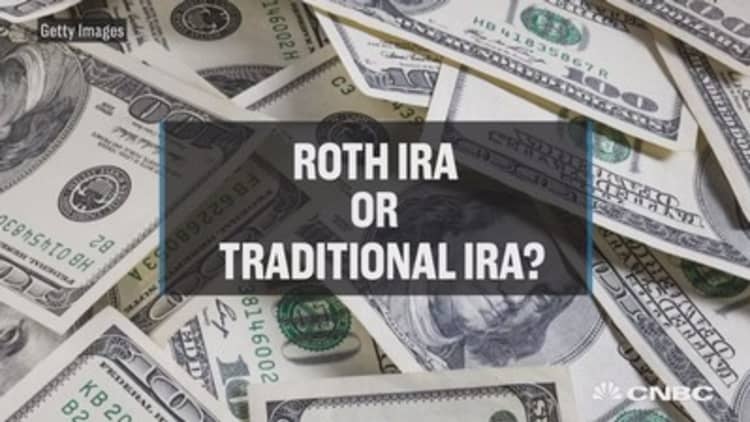If you're married, you could be missing out on one way to sock away even more money for retirement.
Spousal individual retirement accounts let you save money toward retirement for a non-working spouse. Individuals can contribute up to $5,500 per year to an IRA. If you're 50 or over, you can contribute as much as $6,500.
"That's $5,500 or $6,500 every year that people are leaving on the table," said Ed Slott, an IRA expert and founder of Ed Slott & Co.
Better yet, there's still time to make these contributions for 2017, even though the year has ended, Slott said. Those contributions would need to be made by tax day — April 17 — in order to count for last year.
"It's one of the biggest missed opportunities," Slott said. "People just don't think of it."
Spousal IRAs are subject to those annual limits, as well as other restrictions.
First, one spouse has to have wages or earned income to qualify to put money in either a pre-tax IRA or post-tax Roth IRA.
It's one of the biggest missed opportunities. People just don't think of it.Ed SlottFounder of Ed Slott & Co.
For traditional IRAs, you cannot make contributions from the year you turn 70½ and after. So if a non-working spouse is over 70½, you cannot put money in an IRA.
For Roth IRAs, you cannot contribute if you have joint income $199,000 or over for 2018 or $196,000 and over for 2017. To contribute to a spousal Roth IRA, the working spouse cannot earn more than that amount.
"The contributions in a Roth can be withdrawn any time for any reason, tax and penalty free, so young couples should definitely be doing that," Slott said.
You may be subject to taxes or penalties if you withdraw the earnings on a Roth IRA, depending on your age (particularly if you are under 59½) and whether the account is less than five years old.

One potential downside to spousal IRAs is a lack of liquidity if you don't want to be hit with penalties, said financial advisor Lee Thomson, an LPL registered principal at Thomson Investment Group in Prosper, Texas.
If you think you are going to need funds in an emergency, it is best to set aside a savings account specifically for that purpose, Thomson said.
While you can put your IRA savings for the year in the account all at once, Thomson encourages investors to fund the account on a dollar-cost basis every month. That strategy will allow you to buy at different prices and potentially increase your rate of return, he said.
The amounts you save in a spousal IRA can add up over time. If you invest $5,500 per year over 10 years, that's $55,000 plus growth, Slott pointed out.
"As long as you have a spouse that doesn't have income or is not working, load up that spouse too, if they qualify under the age and income limits," Slott said.
More from Personal Finance:
Putting bitcoin in your IRA can sink your retirement
5 key differences between Roth and traditional IRAs
This rollover mistake can sink your retirement savings


